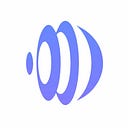We consume an extensive amount of knowledge throughout our lives. We spend hours and hours educating ourselves by reading and listening to informational content. Where does all this useful information go? How many ideas do we have but never work on? How much of the knowledge do we actually assimilate?
Our brain can only hold a certain amount of information at a time. Building a Second Brain is a methodology to expand our memory and intellect by using tools of technology and networks. It changes the way we optimize and access our memories. This method sought to revolutionise the way we use the information we accumulate through our learning process.
So, why is a ‘second brain’ needed at all? Turns out that the one which we use is not efficient enough. There are certain gaps in our ability to learn and retain information. The concept of a second brain would help us in storing and comprehending information better. This is done by linking information and forming connections. Tiago Forte and other productivity experts have outlined a guide that follows three steps to building a second brain.
- Remember
One of the main problems we face is that we forget most of the information we consume. Information goes to our short-term memory and does not make it to our long-term storage. To deal with this problem, we have to be exposed to information repeatedly. Repeated exposure with the information we want to remember creates a familiarity with it, and it subsequently becomes easier to access it.
Now, the second brain system demands that we use technology to capture and store the information we consume. Basically, it entails creating a centralised digital location to access all the stored information across all devices.
A critical aspect of this step is consuming information with a purpose. Developing a healthy and efficient second brain entails curating the data we are presented with properly. Determining whether the information we capture would be useful for us in the future is an integral part of this.
Digital tools help in storing data, read about more such tools: 3 Best Google Docs Alternatives
2. Connect
This is a crucial step as it helps you see the growing number of connections within the stored information. Interacting with the information or using a digital system helps in visualising and assimilating the data.
Note-making is an important skill here; it becomes easier to grasp and remember content when it is summarised into a few bullet points. It becomes much easier to compare data.
One of Forte’s conceptualisations comes extremely handy as well. The concept of progressive summarisation, as the term suggests, refers to summarising a piece of information multiple times. This allows you to see the data through various layers.
To learn more about why sorting out information is essential, refer to Drowning In Content
3. Create
The final step is the culmination of the above two, which includes putting the stored and processed information into actual use. Since we have ensured that the information is organized and categorised, the only job left is to efficiently use it.
Using all the information that has been accumulated to create new things and sharing what you have learned through the process is essential. There is no point in keeping all the information within yourself without sharing your learnings with the rest of the world.
We should practically apply these methodologies to increase productivity and quality of work output. As mentioned, building a digital repository to store all your information is the first step towards building a second brain. Several tools can act as a digital bank to backup all the data that we consume and help organise everything.
This concept helps empower you to harness your knowledge more effectively and puts you in control of your thoughts and memories.
Anushka Das, Content Writer
